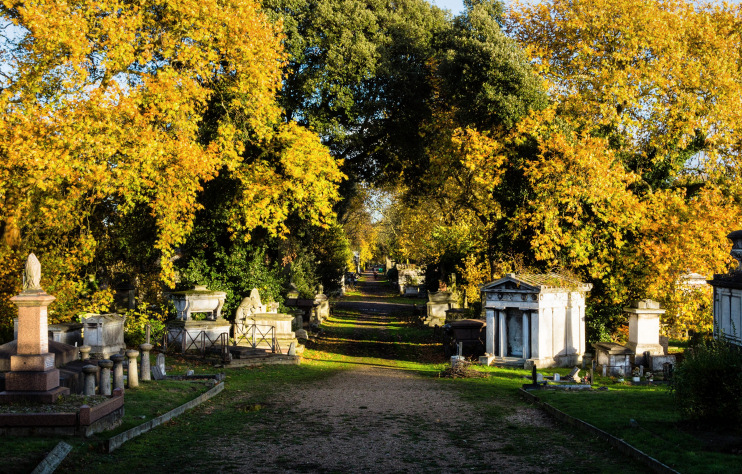Kensal Green
Kensal Green, Brent/Kensington & Chelsea
A diverse residential district situated immediately north of the western part of Harrow Road – and a magnificent cemetery to the south

The green itself was enclosed in 1823 and around this time the first suburban cottages and villas were built along Harrow Road. Many survive today.
Surprisingly, it was the opening of the cemetery in 1832 that made Kensal Green a fashionable residential area. Laid out on 56 acres of land between Harrow Road and Grand Union Canal, Kensal Green was the first of many suburban cemeteries that were created by joint-stock companies in response to the difficulties of finding burial space in central London churchyards. Brunel, Thackeray and Trollope are among those buried here.
Brent’s fast-growing Kensal Green ward is ethnically mixed. Just under half the population is white, of whom about half are white British. The most significant non-white minorities are of black Caribbean, black African and Indian descent. The ward also had more than 1,100 mixed race residents at the 2011 census. Kensal Green has around 8,000 Christians, 2,500 with no religion and 2,100 Muslims.
The Mancunian novelist William Harrison Ainsworth lived at Kensal Manor House and is buried in Kensal Green cemetery.
GK Chesterton’s poem ‘The Rolling English Road’ makes reference to the cemetery in its famous couplet, “For there is good news yet to hear and fine things to be seen / Before we go to Paradise by way of Kensal Green.”
Postal district: NW10
Population: 14,915 (Brent’s Kensal Green ward, 2011 census – a 40 per cent increase on 2001)
Station: Bakerloo line and London Overground (zone 2)
Further reading: James Stevens Curl et al, Kensal Green Cemetery, Phillimore, 2002
Website: Friends of Kensal Green Cemetery
